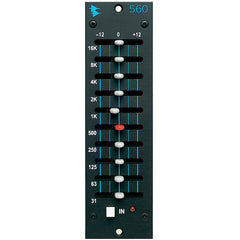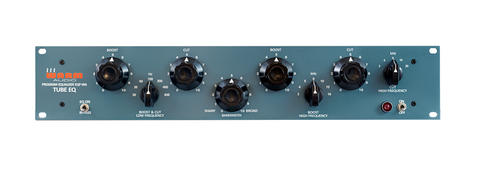Your Cart is Empty
Order Online or Choose Click & Collect from our Artarmon showroom - FREE Shipping on most orders over $100
Menu
-
- Shop Music Gear
- Top Selling Brands
- Hot Deals
- Services
- Christmas Gift Ideas
-
- About Us
- Newsletter Sign up
- Contact Us
- Brand Index
- 1300 13 0202
- Login

Order Online or Choose Click & Collect from our Artarmon showroom - FREE Shipping on most orders over $100
How to use EQ
May 14, 2015 6 min read
Like many Audio Production tools, EQ or (equalization) was not born from musical parents. The earliest use of equalization that I can find was in telecommunications, where it was used to maintain a flat frequency in telephone lines from input to output.
The most common form of EQ is the Tone controls on a HiFi System. The treble control adjusts high frequencies; the bass control adjusts low frequencies. I remember as a kid always turning up the bass and treble dials on my dad's ancient silver HMV hifi to make the music sound better. Little did I know, I was employing one of the most common of EQ curves, the smiley face. As I quickly learnt, the smiley face EQ curve always made the songs sound better and this is still the case today.
What is EQ doing? In its most basic form, Equalization or EQ means boosting or reducing (attenuating) the levels of different frequencies in a signal.
There are a few types of EQ each offering a different method of altering tone.
Parametric EQ
A typical parametric EQ will hone in on a very specific frequency using 3 parameters; Frequency, gain and Q. The frequency allow you to sweep a given frequency band to find the exact frequency you need to change. The gain will boost or cut that unique frequency while Q will define the band or bell around the frequency. A bigger Q setting the more adjacent frequencies will be affected by the gain control. Some EQ units will be fully parametric providing a variable Q setting while others only offer a selection of maybe 2 Q settings to choose from.
The parametric EQ is the most used EQ in the studio because of its power. You will often see several bands together and some of these bands will overlap and are typically found on outboard units and mixing consoles.
Tip
A common mistake when using a parametric EQ is to boost the gain then sweep the frequency knob to find the good or bad harmonic. Why is this bad? Well as you sweep the knob the ear gets used to each frequency as it changes and can no longer perceive the good or bad harmonic as it’s constantly changing. A better use is to set the frequency knob to where you believe is the correct position, and punch in the EQ. If it’s not right punch the EQ out, move and try again and repeat. This way your ear hears exactly the frequency that is being boosted or cut and is much better way of training the ear and narrowing in on the good or bad frequency. I leant this method by reading “Mixing with your mind” by Michael Stavrou. This book has plenty of nifty little tricks like this and is really worth a read. You can get the book here.
Some examples of parametric EQ are the SSL E-Series 500 unit. This has 2 fully parametric mid bands and 2 semi parametric bands and sounds awesome. If you are looking for a powerful EQ and don’t want to spend a fortune this is a great unit.
Have a look at the Manley Massive Passive EQ. This unit is fully featured with four fully parametric bands with switchable high and low pass filters. All this EQ mean big dollars but this EQ is a go to for mastering engineers and producers for its power and versatility.
Graphic EQ

Graphic EQ is typically used for PA and stage systems but can also be found in the studio and on guitar FX pedals. Graphic EQ is a very simple and effective form of equalization. A slider represents of specific frequency with a +/- value and 0 in the middle. To boost or cut that frequency simply move the slider up or down.
API make a great little 500 series graphic EQ, API 560 that proves to be quite popular. It’s nice to be able to just grab a slider and move it. Legendary producer Brian Eno is well known for his love of graphic EQs.
Hi and Low Pass Filters
If you’ve ever used subtractive analog synthesizers, you will be familiar with these types of EQ filters. As their name suggests a high Pass filter will allow high frequencies to be heard, or passed, while low pass will, as you may have guessed, allow only low frequencies to be heard. Unlike synthesizers though, these EQs don’t have a Q or resonance control, they will often also only be a fixed frequency as opposed to being able to be swept, however a sweepable high or lowpass filter is a great thing indeed.
Using these filters you can really strip all the bottom or top end of a signal fitting that sound nicely into a mix.
Tip
A vocal can represent a large frequency spectrum often deep down into the lower register, however you really don’t want all these frequencies clouding up your mix – especially if your mix is frequency dense. 90% of the time I will engage a high pass filter to strip out those unwanted low frequencies - better still, if the unit has a sweepable knob, I will hone in on where the vocal power trails off. Typically around 100 hz.
As an effect, try engaging both high and low pass filters to select a very narrow band to produce a thin, reedy sound. It’s really nice to double track a vocal and use this method on one take blending it back in with a full frequency main part. This will give the vocal a thicker, punchier sound. Send both parts to a compressor and it sounds even bigger.
Shelving EQ
The last form of EQ I’ll talk about here is Shelving EQ. This type of EQ will boost or cut everything above or below a set frequency. You will see shelving EQ or filters usually on a mixing console in the high or low frequency ranges. The tone controls on my dad's old hifi are shelving filter.
Some EQ units like the classic Pultec EQs allow you to push and pull one specific EQ frequency simultaneously. Engineers favour this method for its unique effect. These EQ units are typically very expensive and hard to come by, however there are some great reproductions of these and one of my favourites is the Warm Audio EQP-WA. For a fraction of the price you can get that classic Pultec style of EQ and it really is nice.
EQ TERMINOLOGY
CUTOFF FREQUENCY The frequency at which a high or low frequency EQ section starts to take effect. Also referred to as turnover frequency.
SLOPE The rate at which a high or low frequency EQ section reduces the level above or below the cutoff frequency. Usually 6, 12, 18 or 24dB/octave.
PASS BAND The frequency range that is allowed through.
STOP BAND The frequency range that is attenuated.
FILTER An EQ section of the following types:
HIGH PASS FILTER A filter section that reduces low frequencies.
LOW PASS FILTER A filter section that reduces high frequencies.
BAND PASS FILTER A filter section that reduces both high and low frequencies.
NOTCH FILTER A filter that cuts out a very narrow range of frequencies.
GAIN The amount of boost or cut applied by the equaliser.
Q How broad or narrow the range of frequencies that is affected.
SWEEP MID A middle frequency EQ section with controls for frequency and gain.
PARAMETRIC EQ An EQ section with controls for frequency, gain and Q.
GRAPHIC EQ An equaliser with a number of slider controls set on octave or third octave frequency centres.
BELL An EQ with a peak in its response.
SHELF A high or low frequency EQ where the response extends from the set or selected frequency to the highest or lowest frequency in the audio range.
HF High frequencies
LF Low frequencies
MID Midrange frequencies
TREBLE Hi-fi enthusiasts' word for HF.
EQ OFF BUTTON The sign of a good mixing console!
EQ surrounds us and is one of, if not the most powerful audio tool that an audio engineer will use. Its tone shaping abilities can transform a dull, lifeless sound into a something that shines and stands out in a mix.
I hope this article helps you on your way to better understanding EQ. Try applying some of these techniques above and even though less is often more, don’t be afraid to really push those frequencies for special effects.
If you have any questions, we are more than happy to help you out. You may also want to check out some of the nice EQ units that Sounds Easy has to offer.
Check out our outboard EQ selection here. And some 500 series EQ units can be found here.
Leave a comment
Comments will be approved before showing up.

